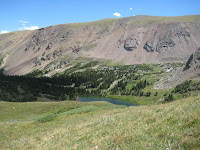The Arduino is an easily programmable mircocontroller that can make a seemingly insurmountable electronics engineering feat into a completely doable project with a little circuit design and C programming know how.
http://arduino.cc
Arduino is an open-source electronics prototyping platform based on
flexible, easy-to-use hardware and software. It's intended for artists,
designers, hobbyists and anyone interested in creating interactive
objects or environments.
This project will eventually monitor a cold frame air temperature and soil moisture. When the air temperature gets over a threshold fans will turn on. When the soil dries out the irrigation will be turned on. I will also be able to log the temperature and turn on the fans or irrigation remotely through the home wifi. The inspiration came from a Make magazine article called Garduino and an instructables.com article by the same author.
http://makezine.com/projects/make-18/garduino-geek-gardening/
http://www.instructables.com/id/Garduino-Gardening-Arduino/
Post one is about the power source.
This will be battery controlled and solar charged.
Here is the complete power setup. The 10 watt solar panel was one of the most expensive components at $39.99.
http://www.amazon.com/gp/product/B007YT5XCA/ref=olp_product_details?ie=UTF8&me=&seller=
At 12 volt 8AH battery. This cost $32.99 at Batteries Plus. They are normally used for home alarm systems. They are a good choice since they are designed to be recharged and sealed for low maintenance.
This is the voltage regulator. The battery supplies 12v but the arduino needs either a steady 5v or 9v-12v if you use the on board voltage regulator. Since step down regulators are more efficient than the on board regulator and this project will be solar powered I invested the $7.22 to buy a step down regulator to save some power.
http://www.amazon.com/gp/product/B00CXKBJI2/ref=olp_product_details?ie=UTF8&me=&seller=
This is the charge controller. At 3 amp it is more than will be needed. It also prevents over charge and night time flow back discharge. Cost $14.90.
http://www.amazon.com/Instapark-SS1203-Solar-Charge-Controller/dp/B004XCZN5S/ref=pd_bxgy_lg_text_y
With some taxes in it for about $94 (free shipping!) just to power the project. I think those fresh veggies in November will be tasty enough to justify the cost.
The next post will be about the sensors.
























